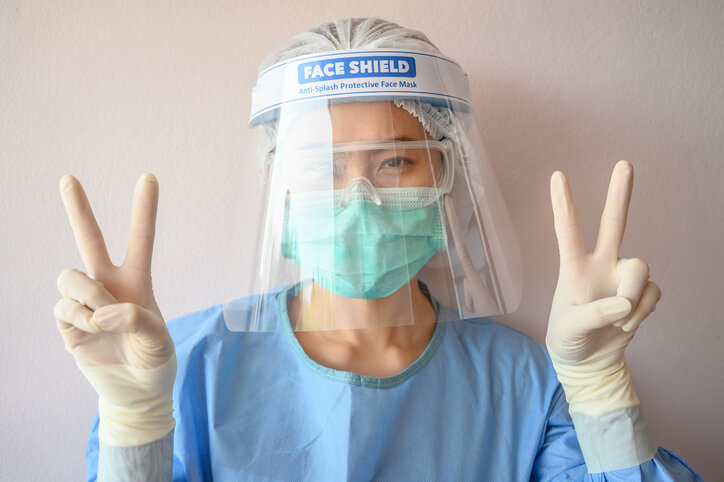What is PPE in a Post-Pandemic World?
What is PPE?
Gloves in the trash. Goggles cleaned and stowed. Mask tossed aside.
I’m a nurse, off duty at the moment. And the items I just mentioned are part of the personal protective equipment, or PPE, that I wear pretty much every day.
The FDA defines personal protective equipment as “protective clothing, helmets, gloves, face shields, goggles, facemasks and/or respirators or other equipment designed to protect the wearer from injury or the spread of infection or illness.” These items are barriers, intended to place the wearer inside a protective shield and keep them safe to do their job.
Goggles and gloves and masks have become commonplace in our world. But it wasn’t always so. Let’s take a look at the history of personal protective equipment.
Historical understanding of PPE
Shields. Helmets. Animal skins. Thick-soled shoes. Great beaked masks. These form part of the visual history of personal protective gear through the centuries. As early as the first book of the Bible, we find humans using objects to protect themselves from illness or unwanted outcomes. (See especially the story of Jacob in Genesis 30 for a fascinating look at this practice.)
Germ theory did not begin to be understood until the nineteenth century when a physician named Ignaz Semmelweis noticed a connection between handwashing and infection. From there, it has become commonplace to wear gloves for almost all medical procedures to prevent the spread of germs. Particularly in surgery, where the skin (one of the primary immune barriers) is compromised, personal protective equipment is worn to protect the surgical wound from any debris or bacteria that might fall into the opening.
Healthcare institutions have developed ever-evolving personal protective equipment guidelines, depending on the organism involved. MRSA, chickenpox, tuberculosis, and other infectious diseases are met with varying combinations of gloves, gowns, and respirators, to protect the healthcare provider while they do their job of caring for the ill person.
That, at least, was generally how it worked, up until the year 2020. Then, everything changed.
The role of PPE in the pandemic
COVID-19 changed the world as we know it, including the role of PPE. Suddenly, the rhetoric changed. No longer was it personal protection that we were after, but other protection. Signage proliferated; “my mask protects you, your mask protects me”.
In this new world, personal protective equipment became a moral duty, a signal of compassion and dutiful sacrifice for the sake of others. Wearing masks became suddenly normal. Not just for healthcare professionals, but for the general public.
Having access to mass-produced masks, in the immediate aftermath of the announcement of a pandemic, was a privilege. Healthcare workers reused and sanitized their single-use masks, sometimes for days on end. The general public was encouraged to leave the N95 masks for the healthcare workers,
the brave frontline workers who faced the risk of exposure daily in the course of their “essential work”.
Early on, mask-wearing was a privilege. Later, when mask mandates started to appear, it was a duty. Like many others, I sewed dozens of homemade masks to meet the abrupt demand.
PPE in a post-pandemic world
One year later, what is the role of personal protective equipment in a post-pandemic world? What does PPE mean to healthcare providers?
The answer is not simple or unified. To some healthcare workers, personal protective equipment is a reminder of the fragility of the supply chain and how quickly and easily they can be put in dangerous situations without adequate protection. To these, a plentiful supply of masks, gloves, and gowns is a basic necessity and symbol of respect.
For others, personal protective equipment has become politicized in a different way, and they are wary of the mandates, skeptical of the science, and wary of the future. To these, a plentiful supply of masks, gloves, and gowns is a constant reminder of how politics has influenced their practice and how quickly this may happen again and/or worsen.
Coda
Experiences and opinions vary widely. However, the role and need for personal protective equipment remain clear. For nurses and other frontline healthcare professionals, having access to adequate equipment remains important.


